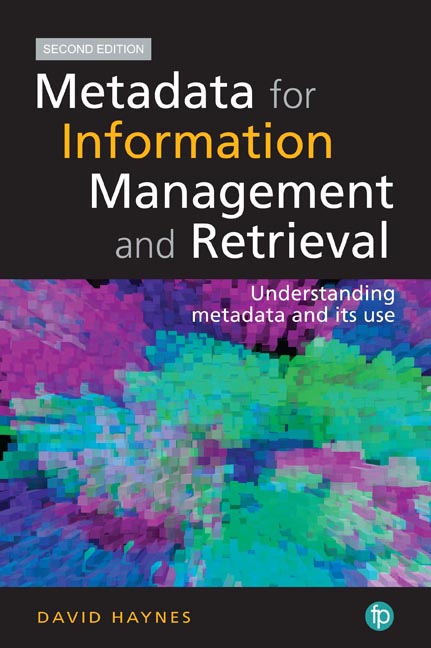3 - Data modelling
from PART I - METADATA CONCEPTS
Published online by Cambridge University Press: 08 June 2018
Summary
Overview
Metadata models help to give an understanding of the development of metadata standards. The chapter starts with an overview of data modelling and its relationship to metadata. It defines some of the terminology used to describe modelling languages, using the Unified Modelling Language (UML) as an example. Systems such as RDF and the ABC Ontology are discussed before considering domain-specific modelling frameworks such as the Library Reference Model (LRM), indecs for the book trade and OAIS for online exchange of information. Van Hooland and Verborgh (2014) talk about four types of modelling: tabular, relational, meta mark-up and RDF. This chapter focuses on the last two types.
Metadata models
A metadata standard is a type of data model which provides a way of conceptualising the characteristics of an information resource. A data model may have its own syntax (grammar) and semantics (meaning) and may be expressible in a mark-up language such as XML (W3C, 2016). One of the interesting aspects of the development of metadata standards has been the convergence of different communities of interest. People have recognised the benefits of working within common frameworks. In order to do so they have adopted common languages for describing the data that they handle. Languages such as XML and RDFa have played an important role in equip - ping these communities with a set of tools to describe data and relationships between data elements (Herman et al., 2015).
Unified Modelling Language (UML)
UML provides a framework for describing data and for data modelling. Hay (2006) talks about ‘semantic data constructs’ when discussing metadata. He introduces the idea of different levels of data, starting with real world things. These might be people or books or items in a store. The next level up is ‘data about real world things’. Typically this would consist of data in databases, including HR systems (people), a library catalogue (books) or a stock control system (items in a store). At the next level up is data about a database or ‘metadata’. This in effect is a data model because it describes the structure of the data. An example from the database domain would be a data dictionary, which is a list of the fields in a database and their characteristics.
Information
- Type
- Chapter
- Information
- Metadata for Information Management and RetrievalUnderstanding metadata and its use, pp. 35 - 48Publisher: FacetPrint publication year: 2018
